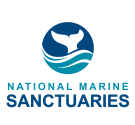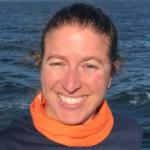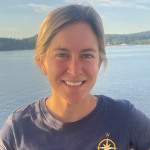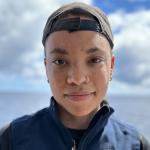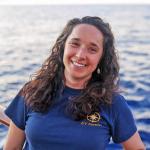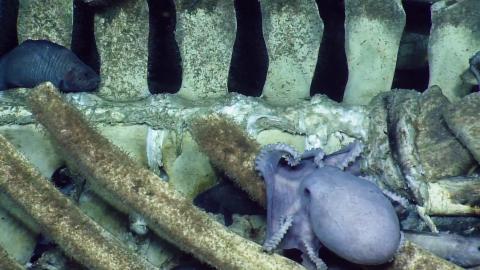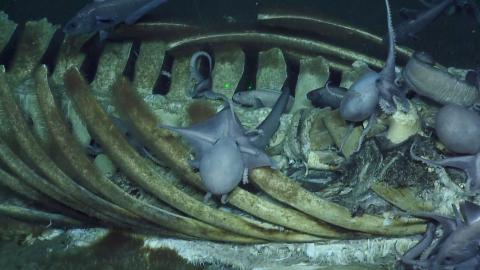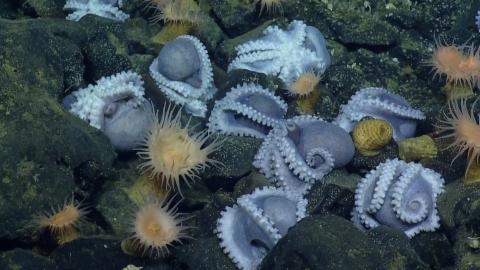The main objectives of this expedition are to revisit and further characterize the “octopus garden,” an unexplored, deep-water region of basaltic rocky reef that resides southeast of Davidson Seamount, within the borders of Monterey Bay National Marine Sanctuary (MBNMS). In October 2018, Nautilus and MBNMS discovered extensive aggregations of over 1,000 brooding female octopuses (Muusoctopus robustus). This genus has an unusual ‘upside-down’ brooding posture, with the underside of the arms exposed and the mantle toward the eggs, which are cemented to bare rock. This area was not fully explored and will be the first objective of this cruise.
Davidson Seamount is an inactive volcanic undersea mountain habitat off the coast of central California, and is considered to be an area of special national significance. One of the largest known seamounts in U.S. waters, the seamount has been called "an oasis in the deep" in an otherwise flat seafloor, hosting large coral forests, vast sponge fields, crabs, deep-sea fishes, shrimp, basket stars, and high numbers of rare and unidentified benthic species. Recent research suggests that this pristine area may be necessary for maintaining healthy coastal populations in the MBNMS, and it is important to characterize the range of these populations on adjacent hard substrate habitat.
Although extensive previous ROV dives have occured on the seamount proper, there is deep rocky habitat southeast of the seamount that could harbor additional communities of corals and sponges. This area was previously mapped in better detail by E/V Nautilus, revealing ridge-like features and several domes comprised of volcanic rock. If time permits, the ROVs will be used to characterize an unexplored flank of Davidson Seamount from base to summit.
Sponsored by: NOAA Office of National Marine Sanctuaries


